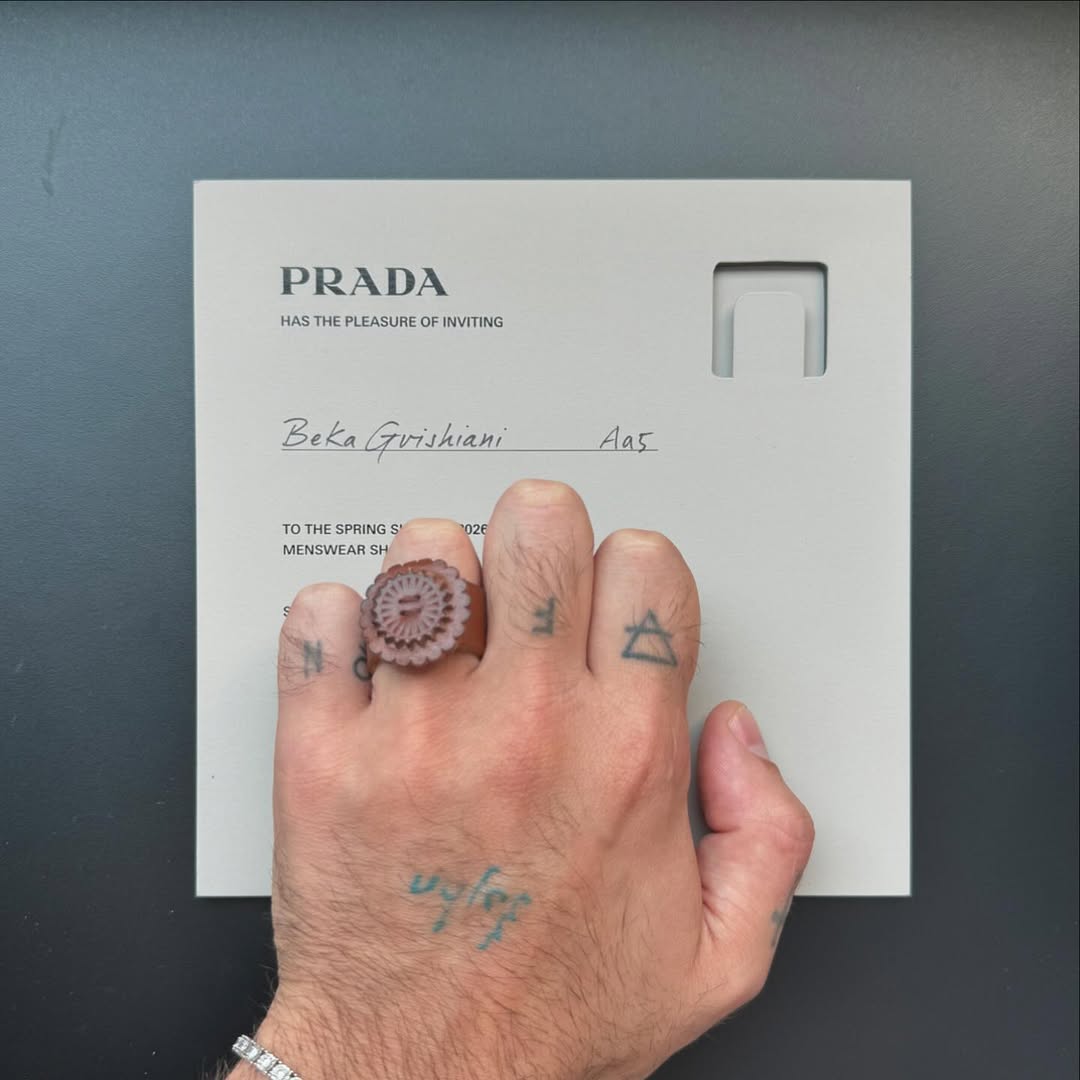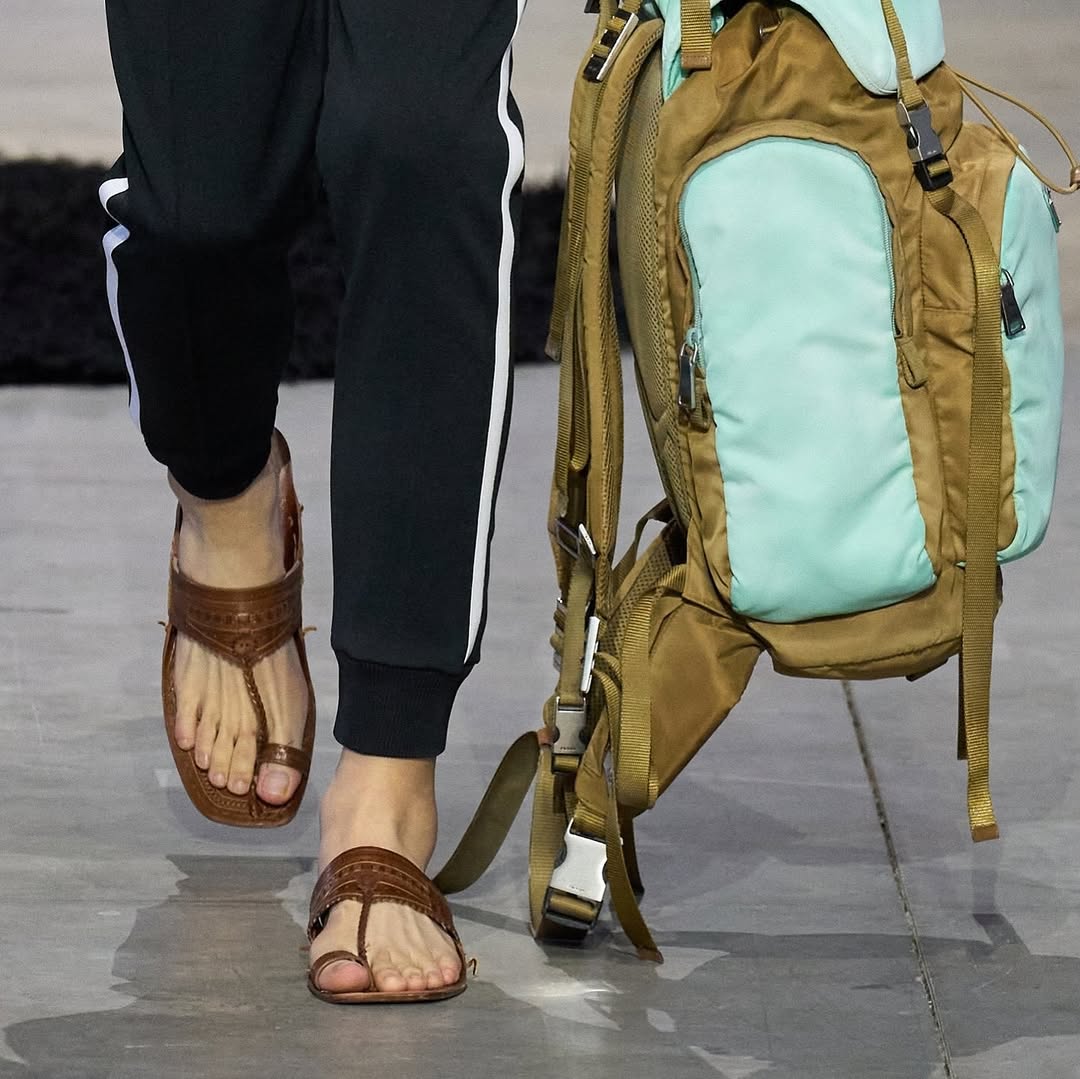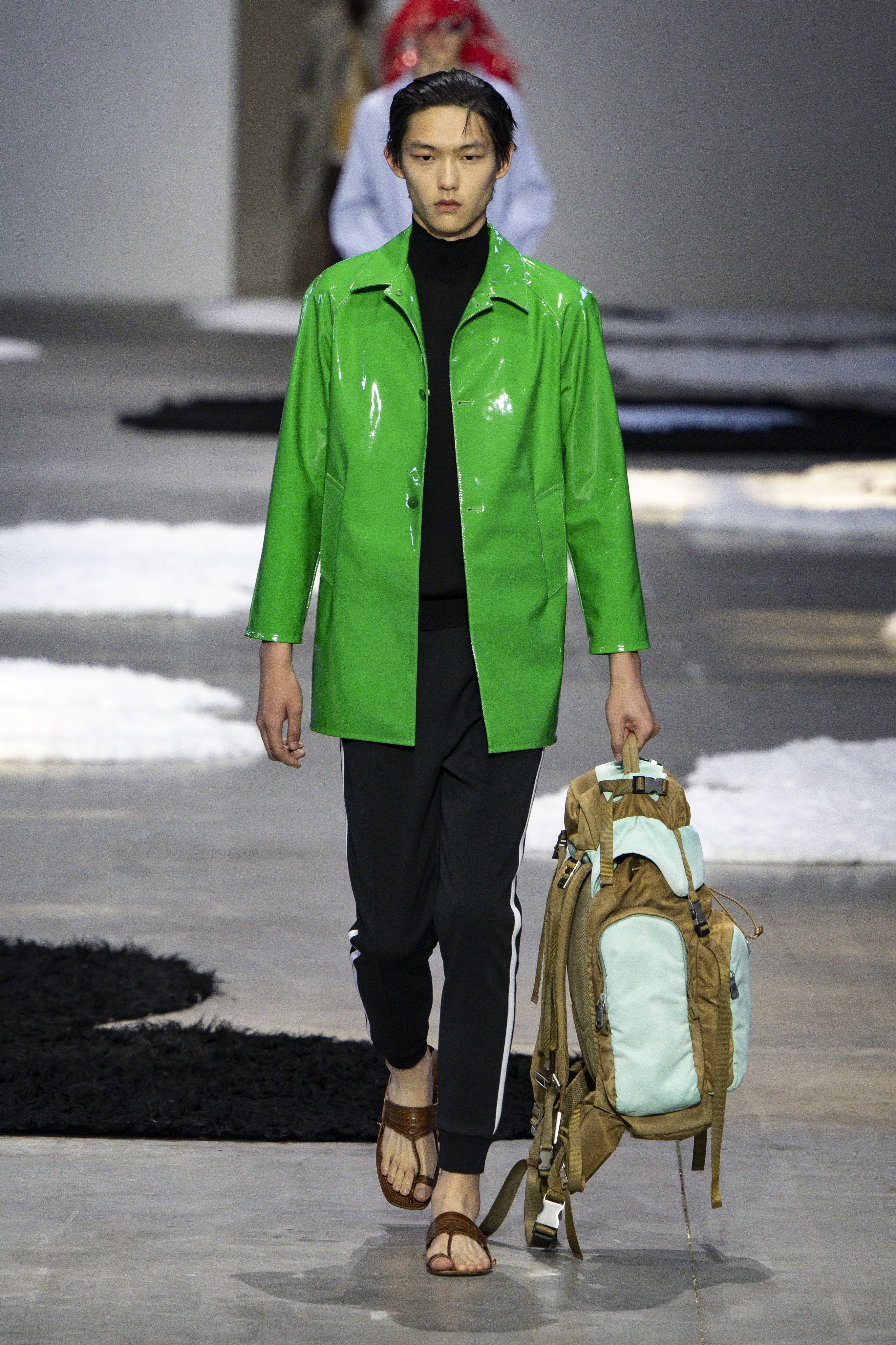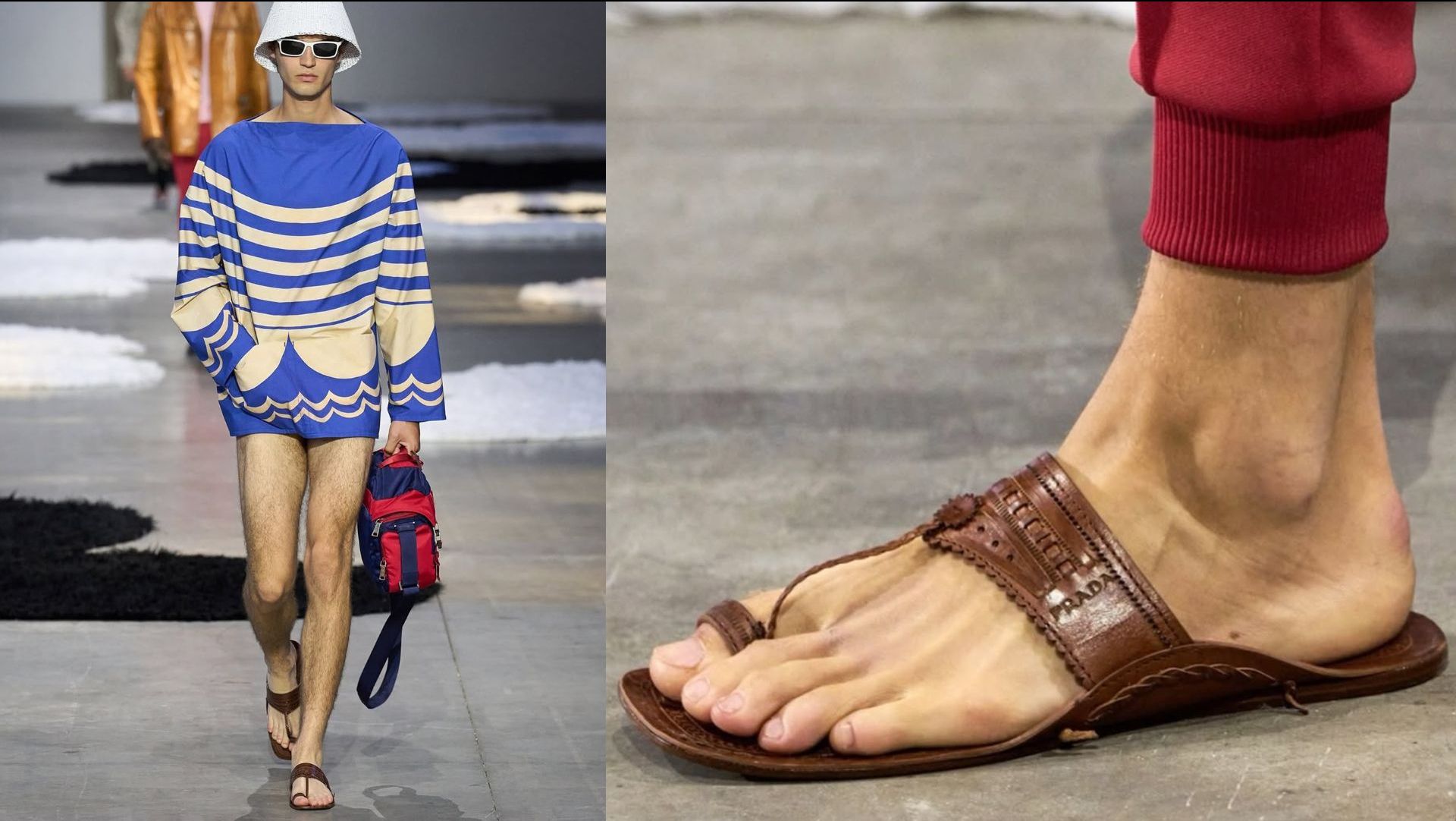From Nehru jackets to turbans, cummerbunds to dupattas—global fashion has long dipped into India’s rich style archive. Now, it’s the humble Kolhapuri chappal that’s getting the high-fashion treatment.
At the Spring/Summer 2026 menswear show, held at the Deposito of the Fondazione Prada in Milan, Miuccia Prada and Raf Simons unveiled a collection described as “a shift of attitude — dismantling of meaning, and dismantling power.” The show was part-whimsical, part-futuristic, but the standout for Indian fashion-watchers was the luxurious reinterpretation of the Kolhapuri chappal.
This wasn’t an accidental tribute. Invites to the show included a minimalist leather ring, an immediate visual nod to the signature toe loop that characterises traditional Kolhapuris. Digital fashion platform Stylenotcom shared the invite, while Instagram’s go-to fashion critic Diet Sabya commented: “Are we ready for a Prada Kolhapuri that’ll cost us £1,000 a pair? And that’ll be ‘Fashion’ because Europeans will suddenly start wearing it?” But before you whip out your ChatGPT-edited argument of how we’re living through the colonisation of Indian fashion, let’s bring you up to speed with the history of the iconic Kohlapuri Chappals.

The History Behind Kohlapuri Chappals
Reports suggest that the earliest evidence of the origins of the Kohlapuri chappal lie in the 12th or 13th century Maharashtra and was allegedly made popular by Chhatrapati Shahu Maharaj, who popularised the style while wearing it during his reign in the 18th century. Made from locally tanned leather, they are handcrafted by artisans using techniques passed down through generations. The iconic toe loop isn’t just a design element—it’s part of the shoe’s structural integrity, crafted without nails or industrial stitching. Even today, the footwear is widely worn across India by both men and women and it stood as a symbol of affordability, durability and comfort.

Indian Fashion Elements in Couture
This isn’t the first time European fashion houses have borrowed from Indian design. From Paul Poiret’s 1910s turbans to Jean Paul Gaultier’s sherwani-inspired tailoring and more recently, Gucci’s bespoke “sari” and the Scandinavian brand Bipty modelling the age-old dupatta as a “Scandi scarf.”
However, the adaptions of these classically-Indian trends hasn’t always gone uncredited. For example, the 2023 Dior Show at the Gateway of India saw the Parisian fashion house collaborating with Mumbai’s Chanakya School of Art to spotlight handcrafted embroidery, vibrant fabrics and intricate tailoring. Even shoemaker Christian Louboutin has delivered many India-inspired designs—complete with embellished juttis, embroidered heels and capsule collections made in collaboration with Indian artisans. The same can be said for brands like Hermes, Dries Van Noten and even Louis Vuitton who have adopted Indian style elements while also shining a spotlight on the craftsmanship and skilled artisans of the country.
So, Is This Cultural Appropriation or Appreciation?
That’s the million-rupee question. When a Kolhapuri goes from ₹600 at Linking Road to $1000 in Milan, it brings up some complex feels. But to be fair, Prada’s entire S/S 26 ideology revolves around flipping status symbols—elevating the ordinary, questioning fashion’s rules, and making space for overlooked silhouettes. The Kolhapuri checks all those boxes. Still, the real win would be if this moment sparks more visibility for the Indian artisans who’ve kept these designs alive. A shoutout, a collab, a spotlight—because behind every “new trend” is someone who’s been doing it forever.

This sentiment resonates with Aprajita Toor, a renowned name in the Indian footwear space, who’s known to time and again re-design the traditional Kohlapuri to fit modern aesthetics.

“As lovers, makers, and wearers of the Kolhapuri craft, it’s impossible not to feel a mix of emotions. For us, they’ve never been a trend; they’re a legacy stitched into leather. Global recognition has been overdue; now the world is finally watching. Let’s make sure it sees the whole story, and the applause must echo back to the hands that made it possible. The Kolhapuris are not a trend, it’s time, terrain & tradition passed hand to hand, soul to sole.”






